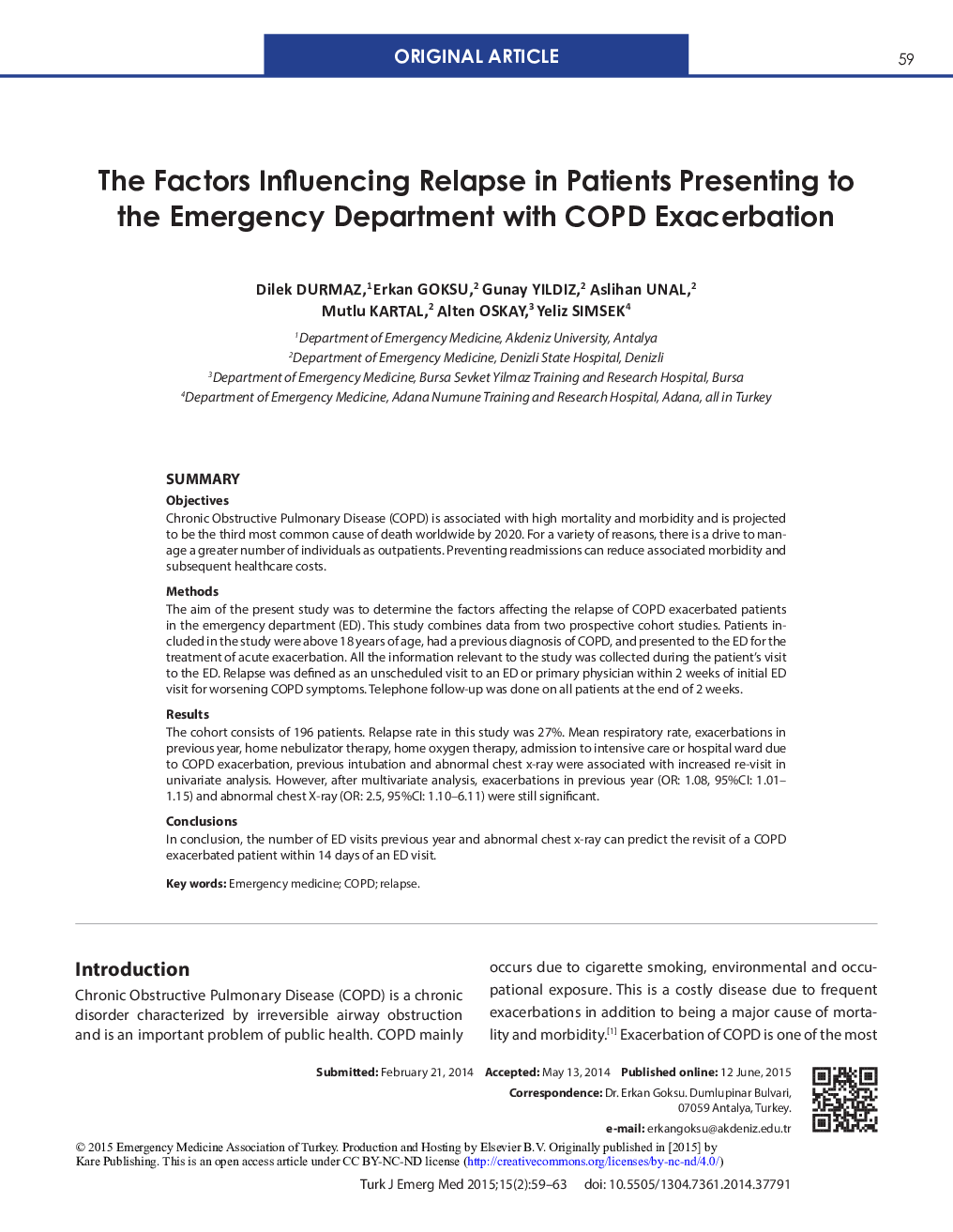| Article ID | Journal | Published Year | Pages | File Type |
|---|---|---|---|---|
| 2604055 | Turkish Journal of Emergency Medicine | 2015 | 5 Pages |
SUMMARYObjectivesChronic Obstructive Pulmonary Disease (COPD) is associated with high mortality and morbidity and is projected to be the third most common cause of death worldwide by 2020. For a variety of reasons, there is a drive to manage a greater number of individuals as outpatients. Preventing readmissions can reduce associated morbidity and subsequent healthcare costs.MethodsThe aim of the present study was to determine the factors affecting the relapse of COPD exacerbated patients in the emergency department (ED). This study combines data from two prospective cohort studies. Patients included in the study were above 18 years of age, had a previous diagnosis of COPD, and presented to the ED for the treatment of acute exacerbation. All the information relevant to the study was collected during the patient's visit to the ED. Relapse was defined as an unscheduled visit to an ED or primary physician within 2 weeks of initial ED visit for worsening COPD symptoms. Telephone follow-up was done on all patients at the end of 2 weeks.ResultsThe cohort consists of 196 patients. Relapse rate in this study was 27%. Mean respiratory rate, exacerbations in previous year, home nebulizator therapy, home oxygen therapy, admission to intensive care or hospital ward due to COPD exacerbation, previous intubation and abnormal chest x-ray were associated with increased re-visit in univariate analysis. However, after multivariate analysis, exacerbations in previous year (OR: 1.08, 95%CI: 1.01–1.15) and abnormal chest X-ray (OR: 2.5, 95%CI: 1.10–6.11) were still significant.ConclusionsIn conclusion, the number of ED visits previous year and abnormal chest x-ray can predict the revisit of a COPD exacerbated patient within 14 days of an ED visit.
